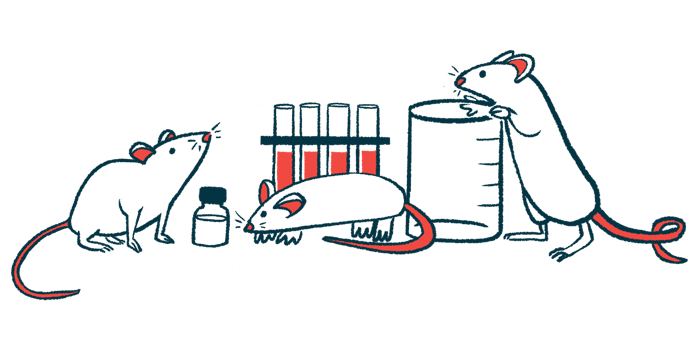Study Findings Support Furtherance of GED-0507 for IPF
Written by |

GED-0507, Nogra Pharma’s experimental therapy, significantly reduced the levels of pro-inflammatory and pro-scarring molecules, while suppressing the maturation of myofibroblasts — the main drivers of lung scarring (fibrosis) — to a similar or greater extent as two approved anti-fibrotic therapies.
These findings, based on data from mice with induced pulmonary fibrosis (PF) and lab-grown human lung cells, shed light on the mechanisms behind GED-0507’s previously reported ability to lessen lung fibrosis in a mouse model.
Together, the results highlight GED-0507 as a potential treatment for PF, and support its advancement into clinical trials involving people with idiopathic pulmonary fibrosis (IPF), the researchers noted.
The study, “GED-0507 attenuates lung fibrosis by counteracting myofibroblast transdifferentiation in vivo and in vitro,” was published in the journal PLOS One.
PF is characterized by chronic inflammation, epithelial-mesenchymal transition (EMT), and excessive wound healing that leads to fibrosis and increased stiffness of lung tissue, impairing breathing. EMT is the process by which epithelial cells, such as those that line the lungs’ airways, gain properties resembling those of fibroblasts or myofibroblasts, two cell types that play a key role in lung fibrosis.
Excessive wound healing is associated with fibroblast maturation into myofibroblasts, the main drivers of lung fibrosis that produce excessively high levels of extracellular matrix (ECM) molecules. ECM molecules surround and support cells, but when overly produced, can cause scarring.
GED-0507 is a small molecule that works by selectively activating the peroxisome proliferator-activated receptor gamma (PPAR-gamma), a receptor protein that suppresses inflammation and scarring. Particularly, PPAR-gamma is known to act against TGF-beta 1, a major pro-fibrotic protein.
GED-0507’s specific structure is thought to provide powerful anti-inflammatory and anti-fibrotic properties without the safety concerns of other PPAR-gamma activators. It received orphan drug designation in Europe as a potential IPF treatment, a designation meant to accelerate its development and regulatory review.
The experimental therapy was shown to be safe and generally well-tolerated in animal models, even when given at very high and repeated doses, and in people with inflammatory bowel disease who participated in Phase 1 and 2 clinical trials.
In addition, a previous study in a mouse model of PF showed that GED-0507 lessened lung fibrosis to a similar or greater extent than two approved IPF treatments: Genentech’s Esbriet (pirfenidone) and Boehringer Ingelheim’s Ofev (nintedanib).
Now, the same team of researchers investigated the underlying mechanisms of these therapeutic benefits. Like before, they used the bleomycin-induced lung fibrosis mouse model and evaluated the effects of preventive and curative treatment with GED-0507, Esbriet, or Ofev.
In the bleomycin-induced model, mice are exposed to bleomycin, a highly toxic chemotherapy agent, to induce lung fibrosis. Preventive treatment was assessed in mice initiating daily treatment a day after bleomycin administration, while curative treatment was evaluated in mice starting treatment 14 days after bleomycin administration.
Researchers found that when used as a preventive or curative treatment, GED-0507 significantly lowered the levels of pro-inflammatory and ECM molecules, myofibroblast markers, and mucin 5B, a major gel-forming protein in mucus that is overly produced in PF.
In the preventive approach, the therapy also was associated with a significant drop in TGF-beta levels, and with a restoration of epithelial cell markers — suggesting reduced epithelial dysfunction and EMT. These changes did not reach statistical significance in the curative approach.
Notably, GED-0507’s effects were largely comparable to those of Esbriet and Ofev, except for epithelial cell and myofibroblast markers, in which the approved therapies showed less-pronounced effects.
Moreover, GED-0507 was found to limit TGF-beta-induced fibroblast-to-myofibroblast transition, EMT, and the production of ECM and pro-fibrotic molecules in lab-grown human lung cells. Weaker effects were observed with Esbriet and Ofev.
These findings suggested that GED-0507 eases lung fibrosis by suppressing inflammation, EMT, and myofibroblast maturation, and that it may have similar or even greater benefits than Esbriet and Ofev.
“GED-0507 demonstrated potent antifibrotic properties and might be a promising drug candidate for the treatment of pulmonary fibrosis,” the researchers wrote, adding that the experimental therapy “is now ready to enter a Phase 1b trial in patients with IPF.”







